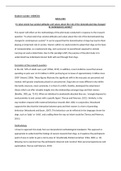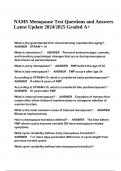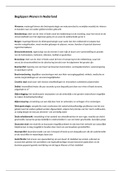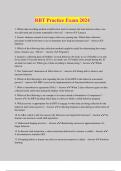Student number: 18000361
SOCG 2101
To what extent has societal attitudes and values about the role of the domesticated dog changed
in contemporary society?
This report will reflect on the methodology of the pilot study conducted in response to the research
question: ‘To what extent has societal attitudes and values about the role of the domesticated dog
changed in contemporary society?’ It can be argued that the domestication of dogs has lead to them
playing an important role in society. Owners within my study tended to adopt their dogs on the basis
of companionship, as a replacement dog, and a precursor to parenthood; opposed to animals
carrying out work-related tasks. Due to this paradigm shift, the purpose of the pilot study is to
understand how individuals interact both with and through their dogs.
Formation of the research question
In the UK, ‘50% of adults own a pet’ (PDSA, 2019). In addition, recent statistics reveal that annual
spending on pets was ‘£4.94 million in 2018, portraying an increase of approximately 3 million since
2009’ (Hoevel, 2006). These figures illustrate the significant shift in the way pets are perceived and
treated, with greater emphasise placed on consumerism. Dogs take on many different roles within
the family structure, most commonly, it is that of a child’s. Bowlby, developed the attachment
theory which can offer valuable insights into the relationships amongst dogs and their owners
(Bowlby, 1982, pp. 72-81). When an individual is emotionally attached they are, ‘strongly disposed to
seek proximity to and contact with a specific figure’ (Teresa and Peterson, 2011). Similarly, in the
way mothers respond with maternal behaviour towards their child. In conjunction, Woodward
supports the idea that the interaction between pets and their owners is a form of parenting
behaviour (Woodward and Bauer, 2007). This behaviour can be reflected in the language chosen for
dogs, such as ‘baby’ or ‘child’, and cradling them the way an infant would be (Teresa and Peterson,
2011).
Methodology
I chose to approach this study from an interpretivist methodological standpoint. This approach is
appropriate to understand the feelings of owners towards their dogs, as it explores the participants
point of view in order to gain a micro-view of ‘situationally limited narratives’ (Flick, 2009, p. 12).
Allowing me to examine how the participants interpret and construct their personal experiences and
explanations (Teresa and Peterson, 2011).
, The method considered most appropriate for this study were semi-structured interviews, in order to
gain experiential phenomena through an interactive individual level that is more personal, rather
than impersonal (Teresa and Peterson, 2011). Semi structured interviews are described as a
‘qualitative data collection strategy in which the researcher asks informants a series of
predetermined but open-ended questions’ (Given, 2008). A written interview guide is developed in
advance which will allow preparation before the interview to plan questions and the topics I wish to
cover (Given, 2008). An advantage of semi-structured interviews is that they gain in-depth,
qualitative data which can provide more validity. This was particularly useful when discussing
personal issues such as family life and experiences which may be associated with their dog. In turn
this allowed me to develop a rapport so the respondent was more likely to give an honest answer.
The nature of semi-structured interviews is ‘conversational’, allowing the participants to raise salient
issues, which enabled me to probe and ask additional questions if necessary. Therefore, this choice
of method affords flexibility and ‘spontaneity’ to responsively adapt during the research process
(Bryman, 2016, p. 397). On the contrary, some participants were more hesitant to go into too much
detail, particularly if the topic became personal to them, as well as being pre-occupied with their
dogs which meant their full attention was not on the interview. This may lead to valuable
information being left out or the participant not going into depth with their responses. In future
research I will consider explaining the level of depth of the interview prior to their participation,
which will set them up for the interview and queries can be addressed during the consent form and
before they take part. Responses may also be affected by the interviewee presence, especially when
introducing myself as a dog owner, as a result the respondent may adapt their behaviour in a way
they believe is favourable towards the question. In order to gain more accurate results, the
interviewer must be highly skilled and trained to engage respondents in conversation over a length
of time. As it was myself conducting the interview, this may lead to limitations in my results. In spite
of this, unstructured interviews still offer an effective methodology which gathers in-depth
information appropriate for my study.
Furthermore, I used stratified random sampling, also known as multi-stage sampling to select a
diverse range of participants who are dog owners. Stratified random sampling ‘involves the division
of a population into smaller groups known as strata’ (Nickolas, 2019). Whereby, members are
formed on the basis of shared attributes and characteristics (Nickolas, 2019). Stratified random
sampling is useful as it is more likely to produce a representative sample. The survey population was
divided into sub groups dependent on social characteristics such as age, gender, social class and
ethnicity, then, the right proportion of people were selected randomly from each category (Bryman,











